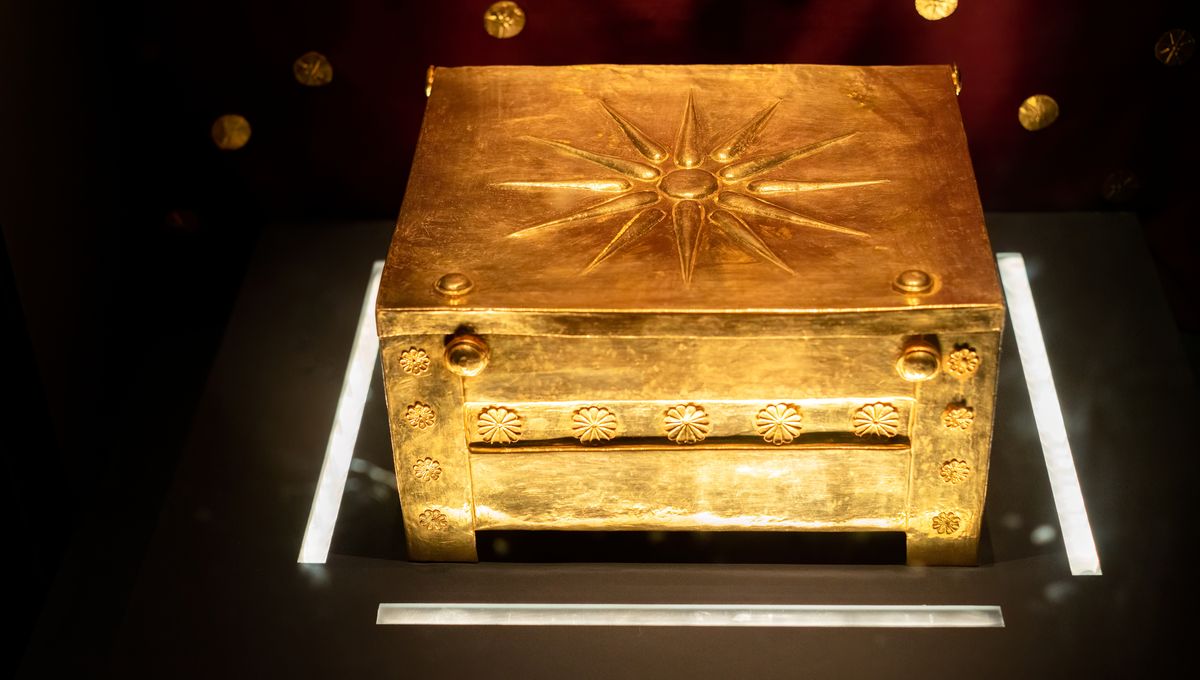
A male skeleton that was previously identified as Alexander the Great’s father has turned out to be the remains of an unknown Macedonian royal who died at least 20 years before Alexander’s old man was assassinated. Housed within the Great Tumulus of Vergina, the ancient bones are widely accepted to belong to a relative of the legendary ruler, yet the exact identity of the tomb’s occupant remains a mystery.
Discovered in 1977 in northern Greece, the Great Tumulus of Vergina contains a series of tombs belonging to members of the Argead Dynasty, which founded the Kingdom of Macedonia and went on to control Ancient Greece. After decades of scholarly debate, it was recently determined that a burial known as Tomb I contains the bodies of Philip II of Macedon – the father of Alexander the Great – along with his wife Cleopatra and their infant son.
The trio is believed to have been murdered in 336 BCE on the orders of Philip’s previous wife, Olympias, thus clearing the way for her son, Alexander, to take the throne. However, a new analysis of the bones in Tomb I suggests that the adult male skeleton was buried some time between 388 and 356 BCE – several decades before the royal hit was carried out.
Using a combination of radiocarbon dating, genetic and isotopic analysis, and osteological observations, the study authors determined that the unknown man was between the ages of 25 and 35 when he died, while the accompanying female was 18 to 25 years old. The researchers say that their findings “exclude any association of this burial with Philip II of Macedon [and his wife Cleopatra].”
Moreover, the baby bones within the tomb were found to belong to at least six different infants, all of whom were buried several centuries after the two adults. Dating from 150 BCE to 130 CE, the youngsters are all from Roman times, leading the authors to conclude that “grieving parents of dead newborns from the Roman period recognized this place as a ready-to-use deep grave for disposing their dead.”
It’s likely that these bereaved parents accessed the tomb via an opening left by Gallic Celt grave robbers in the 3rd century BCE, which was still visible in the Roman era.
More to the point, though, this finding rules out the possibility of any of the tomb’s younger occupants being the offspring of the murdered royal couple. Based on this outcome, the researchers state that “previous suggestions that the skeletal remains belong to Philip II, his wife Cleopatra and newborn child are not scientifically sustainable.”
Exactly who lies within the tomb is therefore unknown, and the researchers refrain from speculating as to the identities of the male and female adults. However, given the lavish nature of the tumulus, they assert that “the male burial must have been that of a high-status individual (perhaps a king who died at a young/middle adult age and was buried several decades before Philip II’s assassination).”
The study is published in the Journal of Archaeological Science.
Source Link: Skeleton In Alexander The Great’s Family Tomb Isn’t His Father After All